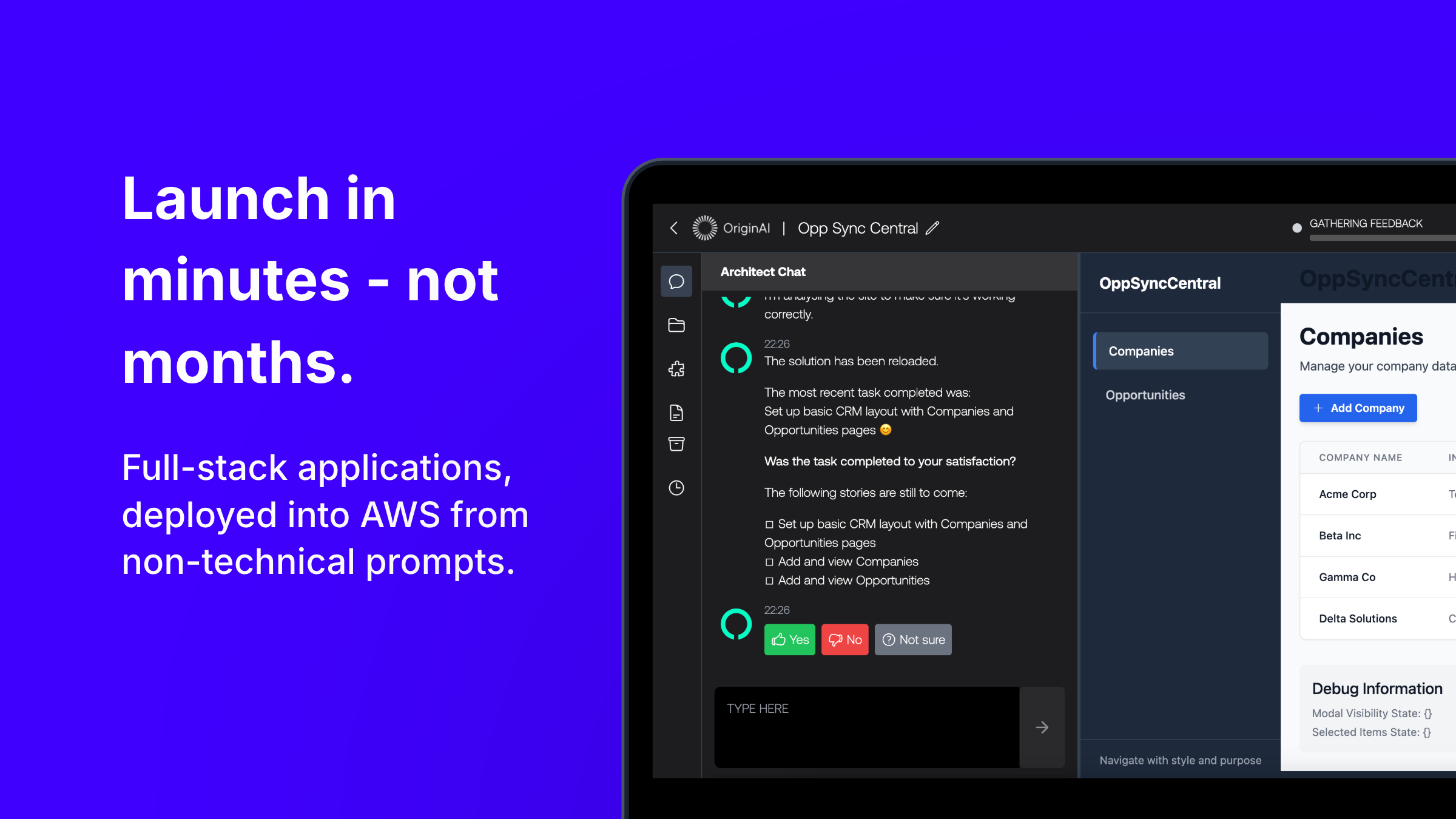Table of Contents
Overview
Tired of waiting months for internal tools to be built? Origin AI promises to revolutionize the way you create SaaS applications. This platform offers a rapid development environment, allowing you to build and deploy internal tools like CRMs, landing pages, and authenticated applications in a fraction of the time. The platform acts as the world’s first AI product team, replacing traditional development roles including project manager, technical architect, designer, developer, QA specialist, and DevOps engineer. Let’s dive into what makes Origin AI a compelling option for businesses and individuals seeking to streamline their application development process.
Key Features
Origin AI boasts a robust set of features designed to accelerate app creation and deployment. Here’s a closer look:
- Template library for SaaS apps: Jumpstart your projects with a wide selection of pre-built templates for common SaaS applications, saving you time and effort.
- One-click deployment: Deploy your applications with ease using Origin AI’s one-click deployment feature, eliminating complex server configurations. Applications can be deployed to secure AWS cloud infrastructure or your own cloud environment.
- Authentication and user management: Secure your applications with built-in authentication and user management capabilities, ensuring data privacy and access control through integrated systems.
- Editable UI components: Customize the look and feel of your applications with editable UI components and complete design systems, allowing you to create a branded and user-friendly experience.
- Backend integrations: Connect your applications to existing systems and data sources with backend integrations, enabling seamless data flow and workflow automation.
- No-code/low-code builder: Build applications without writing a single line of code using Origin AI’s intuitive no-code builder, or extend functionality with custom code when needed. Users receive complete source code access for full control.
How It Works
Origin AI simplifies the application development process through its agentic network of AI-powered agents. First, users create a new solution and connect with an AI architect. The system then prepares a blank canvas as a starting point. Users can describe their requirements using natural language prompts, and the AI product team handles everything from project planning to code generation. The platform automatically creates project plans, modifies designs, writes code, generates images, and runs final tests before deployment. This streamlined process allows users to quickly create and deploy applications without requiring extensive technical expertise.
Use Cases
Origin AI’s versatility makes it suitable for a wide range of applications. Here are a few key use cases:
- Building internal tools: Create custom internal tools to streamline workflows, improve communication, and enhance productivity within your organization.
- Rapid prototyping: Quickly prototype new application ideas and test them with users before investing significant development resources.
- Startups launching MVPs: Launch a minimum viable product (MVP) quickly and efficiently to validate your business idea and gather user feedback.
- Enterprise workflow automation: Automate repetitive tasks and streamline complex workflows to improve efficiency and reduce errors.
- Educators creating learning platforms: Develop custom learning platforms to deliver engaging and interactive educational content to students.
Pros \& Cons
Like any tool, Origin AI has its strengths and weaknesses. Let’s examine the advantages and disadvantages of using this platform.
Advantages
- Accelerates app development significantly, with the platform being 25% faster and 50% more accurate at fixing bugs.
- Offers easy deployment to AWS or your own cloud infrastructure, simplifying the process of launching applications.
- Provides access to complete source code through GitHub integration, giving users full control.
- Supports extensive customization with full design systems and AI-powered design tools.
- Is no-code friendly while also supporting technical users who want to modify code directly.
Disadvantages
- Currently in public beta phase, which may indicate ongoing development and potential stability issues.
- Limited transparency on pricing beyond basic free usage for simple applications.
- As a relatively new platform (founded in 2024), it has a smaller user community compared to established alternatives.
How Does It Compare?
When considering platforms for building internal tools, it’s important to understand the competitive landscape. Retool offers deeper enterprise integrations and developer-focused tooling, with over 50 pre-built components and extensive database connectivity, making it a suitable choice for organizations with complex technical requirements. Retool is used by over 10,000 companies from startups to Fortune 500. Softr, on the other hand, is more focused on creating simple websites and apps with Airtable backends, offering templates and drag-and-drop functionality for basic application needs. Origin AI strikes a balance between these two, offering AI-powered development with complete source code access and cloud deployment capabilities.
Final Thoughts
Origin AI presents a compelling solution for businesses and individuals seeking to rapidly build and deploy internal SaaS tools. Its AI-powered development approach, complete source code access, and flexible deployment options make it an attractive option for those looking to accelerate their application development process. The platform’s recent launch on Product Hunt and public beta availability demonstrate its readiness for real-world testing. While it may still be in early stages compared to established platforms, Origin AI offers a valuable platform for streamlining workflows, improving productivity, and launching MVPs quickly and efficiently.
